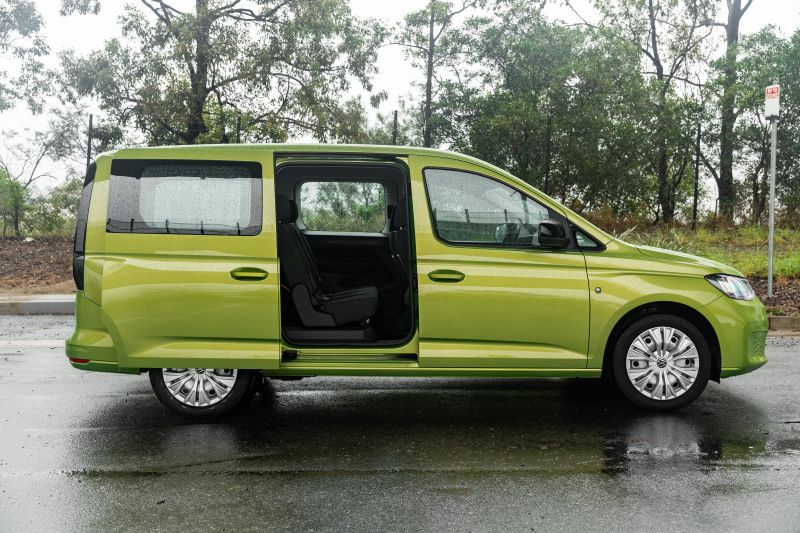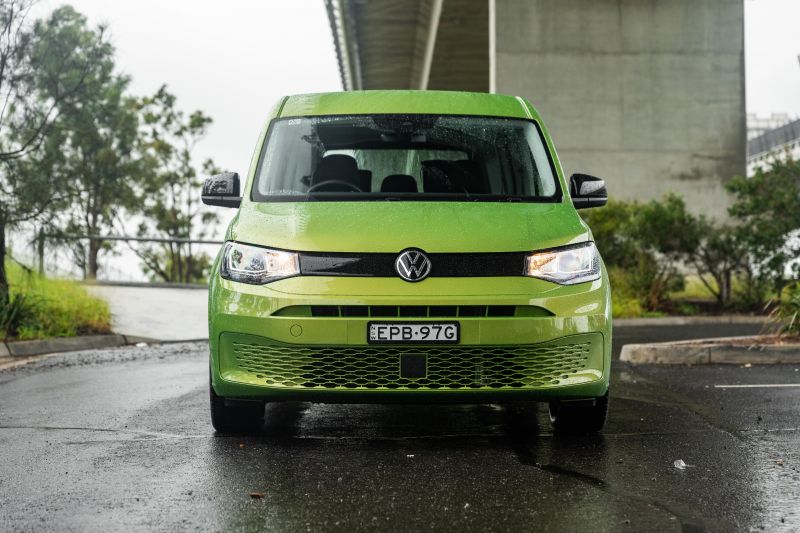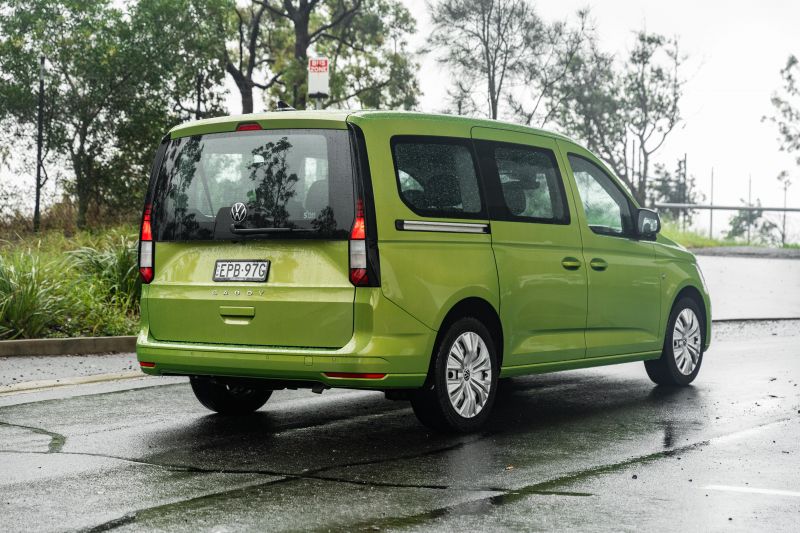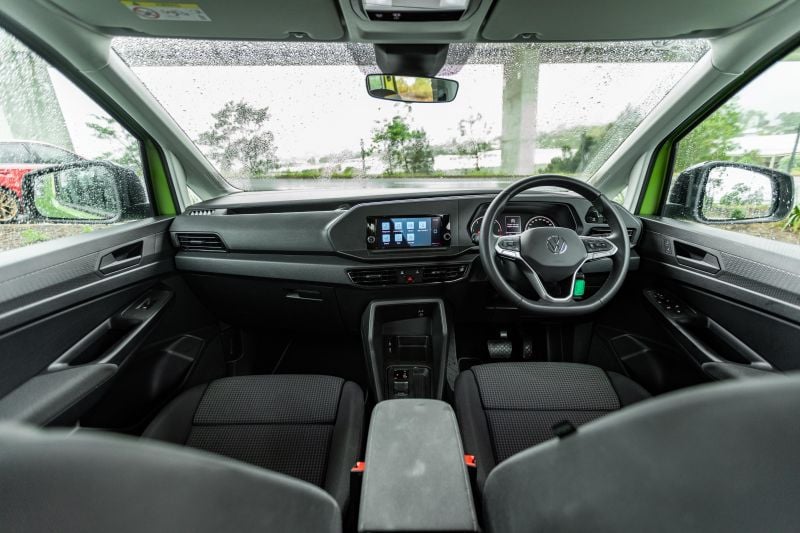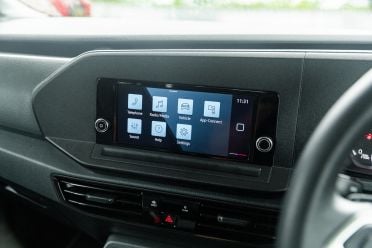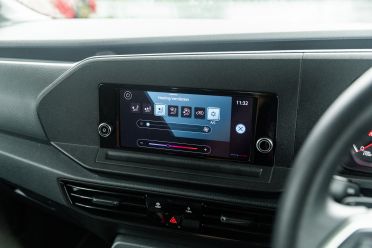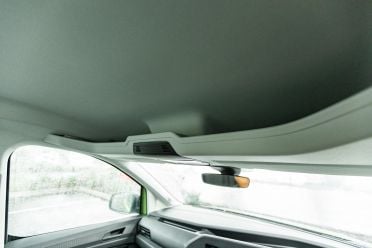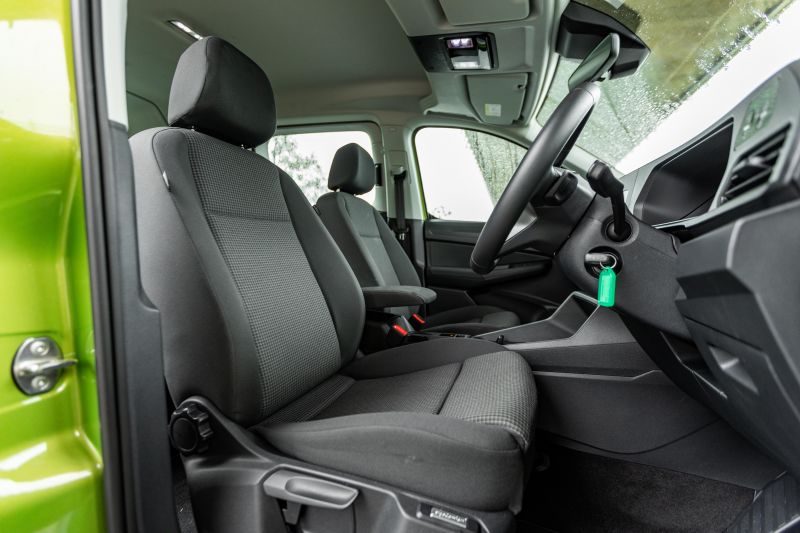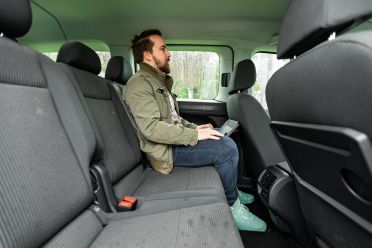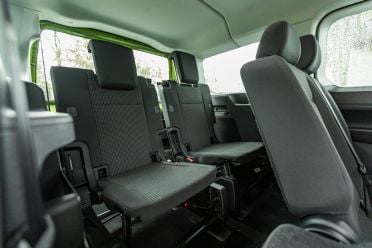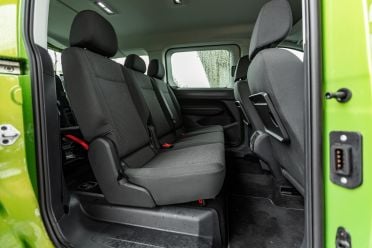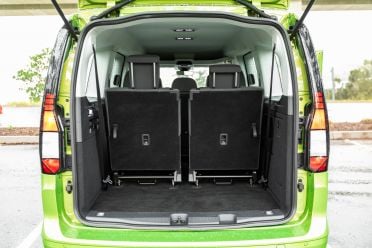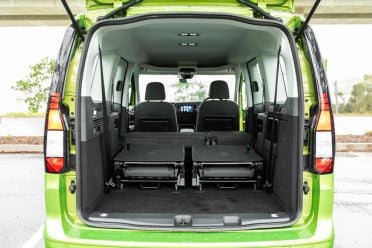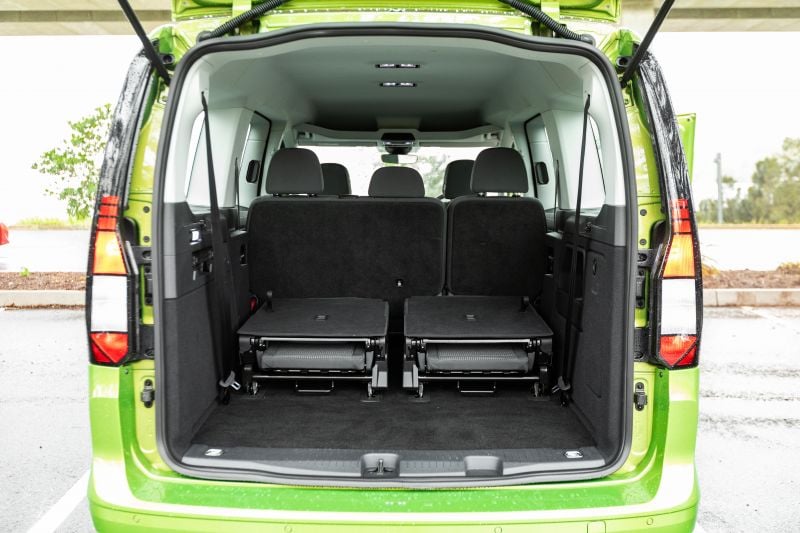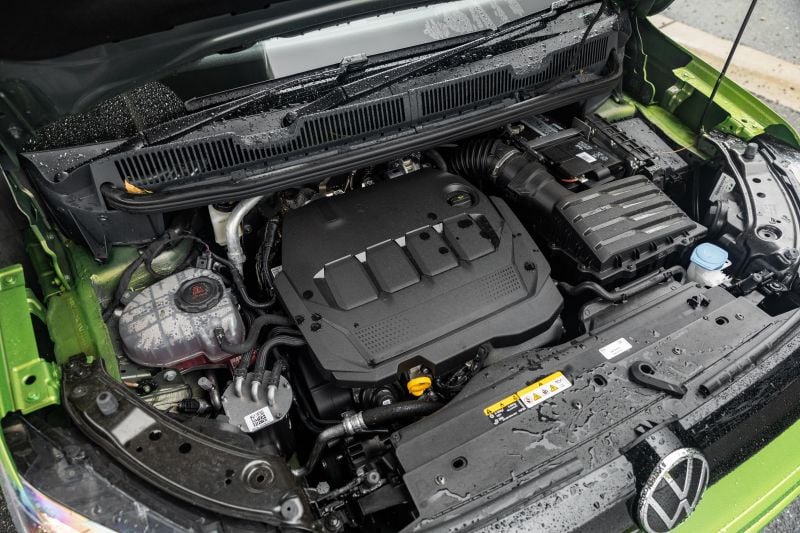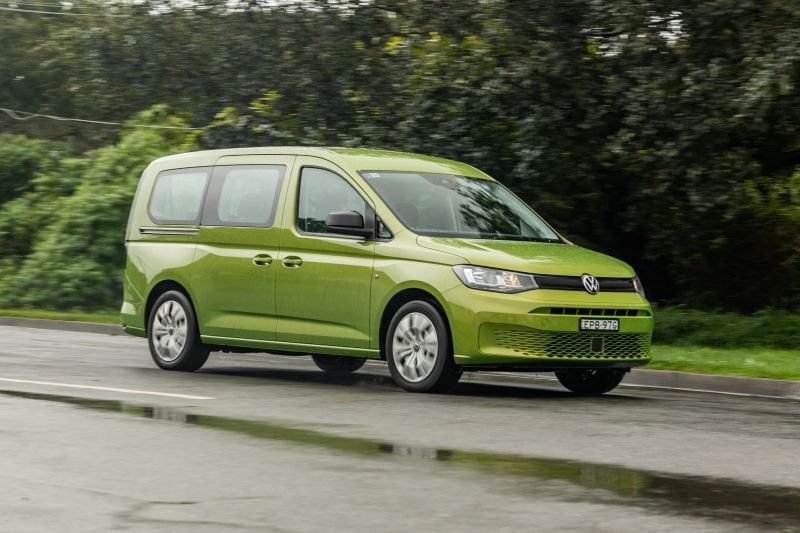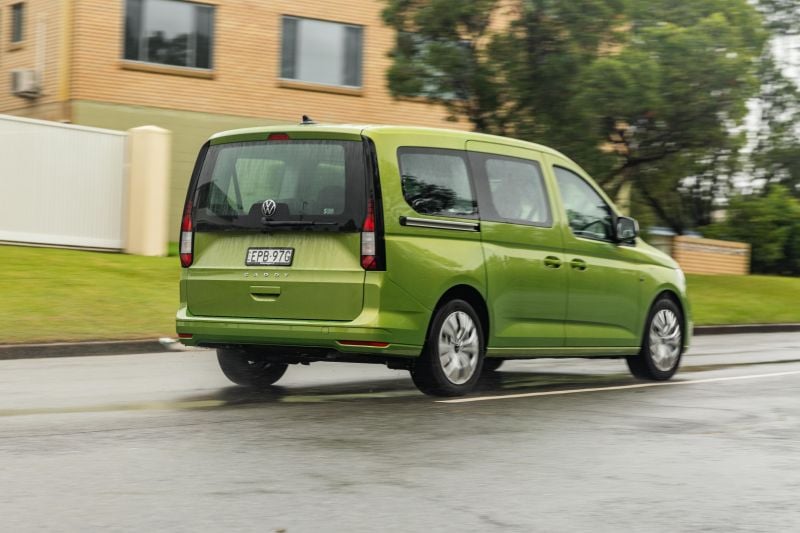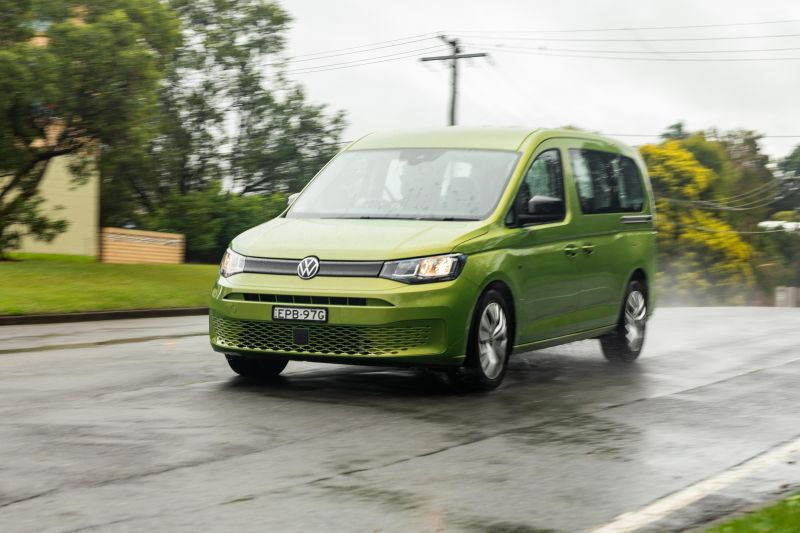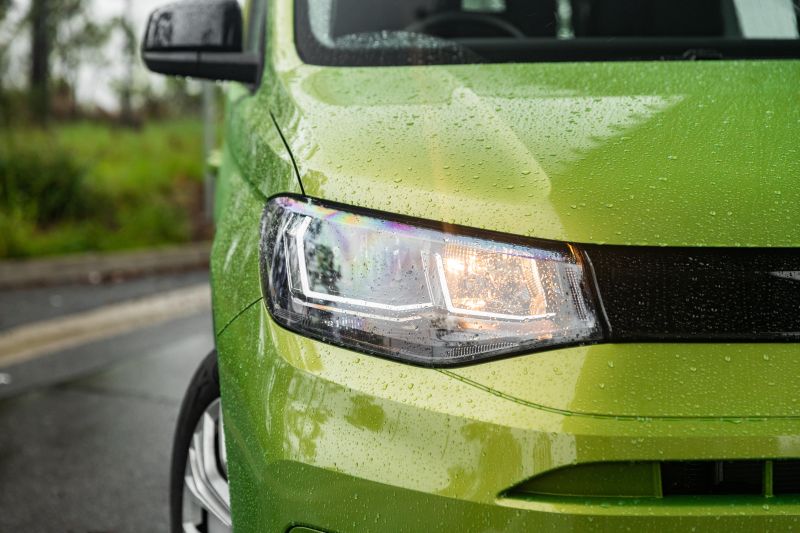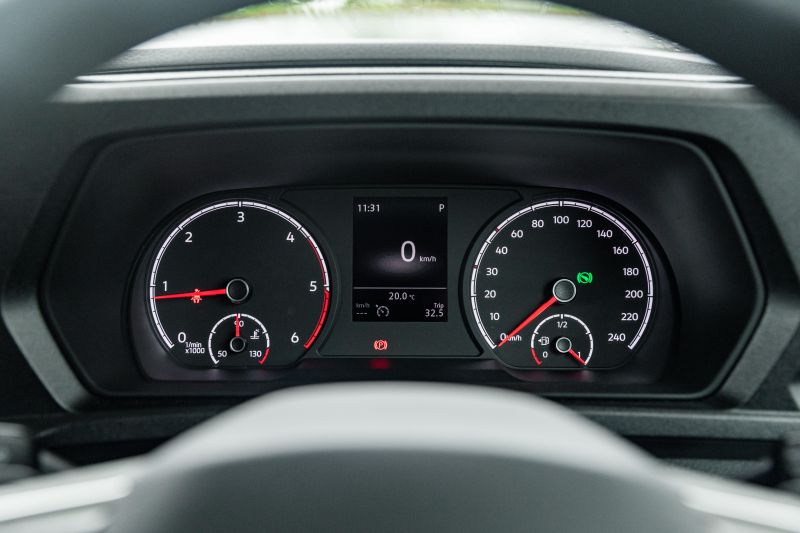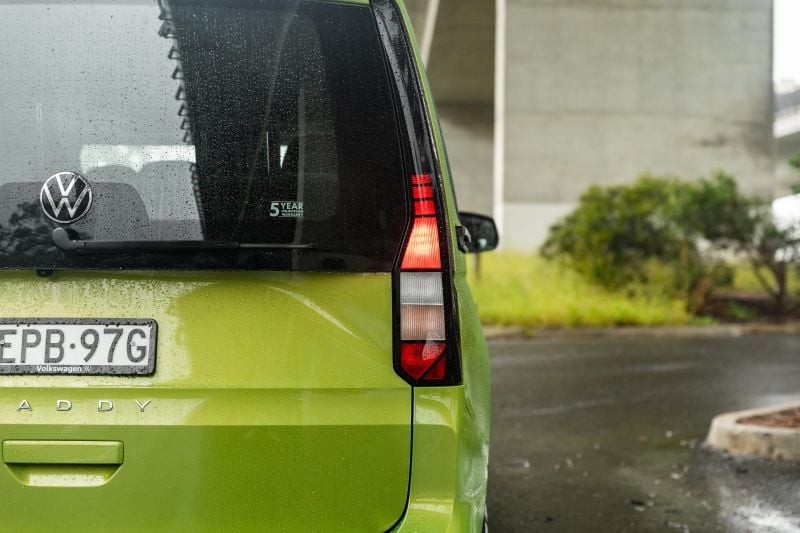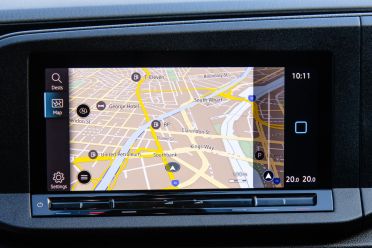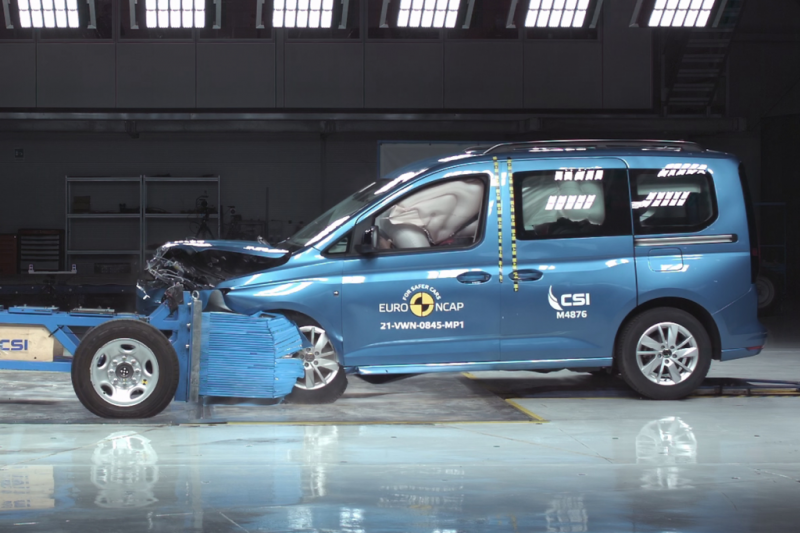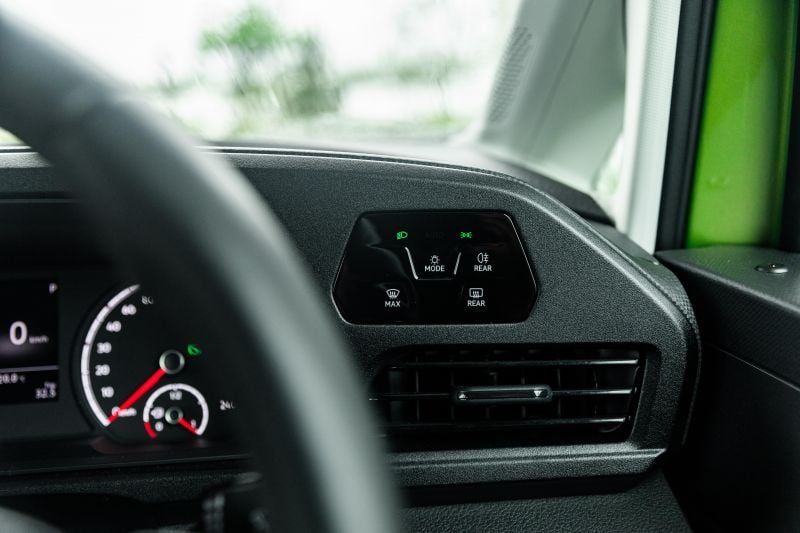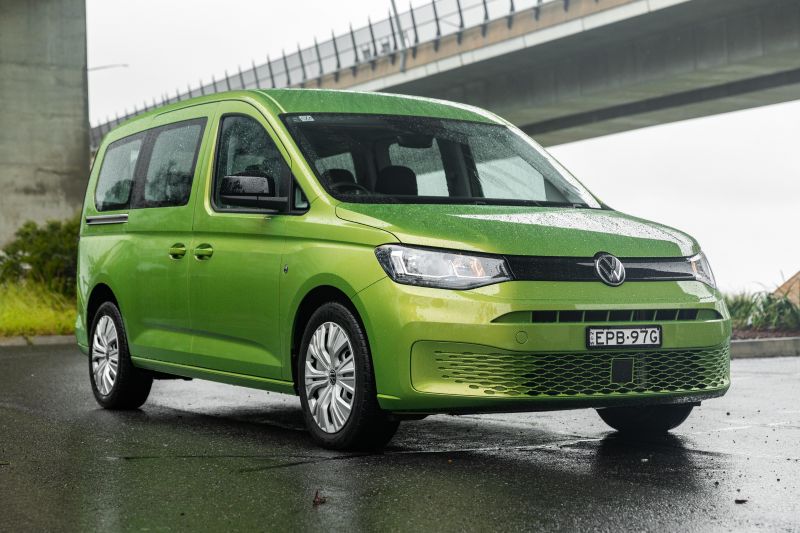Volkswagen may offer a range of three-row vehicles in Australia but, with the exception of the Tiguan Allspace, these are all people movers based on vans.
The Volkswagen Caddy serves as the entry point for the brand’s people mover range here, slotting in underneath the Multivan and Caravelle.
There’s no Atlas crossover above the Tiguan Allspace, nor will you find people movers like the Golf-based Touran or the aged Sharan. The large Viloran, Tavendor and Talagon are also off the table for Aussies, while the new MQB-based Multivan and MEB-based ID. Buzz have yet to be locked in.
With the Tiguan Allspace’s third row proving rather tight and the Caravelle and Multivan starting in the low-$60,000 range, that leaves the Caddy as the option for Volkswagen buyers seeking maximum versatility with minimum outlay.
But while the Caddy may share its body with a humble cargo van, the latest generation – introduced here last year – shares its MQB underpinnings with the likes of the Golf hatchback.
Does that make this a desirable, car-like alternative to bulkier people movers like the hot-selling Kia Carnival, or is this just a van with windows?

How much does the Volkswagen Caddy Maxi TDI320 cost?
All Caddy people movers have the longer Maxi body, but there’s a choice of base or Life trims, each available with either turbo-petrol or turbo-diesel engines.
We’ve put the base trim to the test with the optional turbo-diesel engine. The only option was $1115 Golden Green metallic paint, one of nine optional premium finishes – and, surprisingly for a German car, most of those are actual colours!
The list price for this variant is $50,140 before on-road costs, and ours had an as-tested, drive-away price of $56,562 based on a NSW postcode.
Its price puts it between the base S and Si trim levels of the Kia Carnival diesel. The S is $49,480 before on-roads or $53,690 drive-away, while the Si is $54,980 before on-roads or $59,390 drive-away.
There are precious few people movers remaining at this end of the market, with an extinction event – due largely to SUVs, not a meteor – taking out more compact vehicles like the Citroen C4 Picasso and Kia Rondo, while even larger fare like the Honda Odyssey and Toyota Tarago have succumbed.
The Hyundai Staria looks positively enormous against the Caddy, but in base diesel guise – with standard all-wheel drive – it’s priced from $51,500 before on-roads ($56,685 drive-away in NSW).
LDV is currently without a people mover after it axed the budget-friendly (if not safety-focused) G10 people mover, though it’ll soon add the G90. We don’t yet know, however, how much it will cost.
The Caddy is therefore priced right up against larger rivals, but we imagine there are buyers out there who are seeking something easier to drive than a bulky Staria. More on the Caddy’s performance in that respect later.
What is the Volkswagen Caddy Maxi TDI320 like on the inside?
The Caddy’s dashboard combines the lows of Volkswagen’s latest passenger cars with the hardy but hardly plush appointments of its commercial vehicles.
Like the Golf, you’ll find nary a traditional button here, with a minimalist centre stack and a collection of touch-capacitive controls.
There are no physical climate controls, and you press a touch-capacitive switch below the touchscreen to bring up controls on the touchscreen.
But while the Golf has an infuriating touch slider just below the screen, the Caddy does without. There is, however, a tiny shortcut on the touchscreen.
Said touchscreen measures 8.25 inches, an acceptable if unextraordinary size, but it looks lost in the sea of black plastic that makes up the dash. As in the Golf, it’s laggy, while with Android Auto in particular we observed a dead spot at the bottom of the screen where a firmer jab was required.
A larger 10-inch touchscreen is available, which adds wireless connectivity for the standard-fit Android Auto and Apple CarPlay. You can also opt for a digital instrument cluster, though the analogue gauges and small information screen are neat and legible.
The leather-wrapped steering wheel is chunky and feels good in your hands, and thankfully it doesn’t have the frustrating touch-capacitive switches found on some Volkswagen wheels.
Everything feels solidly screwed together with wipe-clean plastics, ideal for a people mover, but there’s no two-tone treatment or contrasting metal-look trim to brighten up the interior as there is on even a base Carnival.
Instead, there are 3-4 different black plastic textures up front, with a strange, splotchy texture on one of them. Suffice it to say, the dashboard isn’t as nice as a Golf’s, while the door trims are plasticky and broken up with only the skimpiest upholstery.
Storage is abundant, however, with a giant cavity above the sun visors in which you can stash items and completely forget about them. There are also cutouts on the dashboard itself, a collection of rubberised cavities on the centre stack, plus the expected glove compartment and centre console bin. The latter has a clever adjustable armrest in classic Volkswagen fashion.
At the base of the minimalist centre stack, there are two USB-C outlets and a 12V outlet. The gear selector, as with many new Volkswagens, is a stubby little thing.
The seats are finished in what feels like hard-wearing cloth, with a grey colour to tie in with all the other shades of grey in the cabin. The Life also features grey cloth but has a jazzier pattern for a more distinctive look.
Step into the second row and you’ll find the seats don’t slide fore and aft, and legroom is tighter than expected. The windows also don’t slide down.
There are air vents back here, as well as two more USB-C outlets, bottle holders, and trays that fold up from the front seatbacks.
Step into the third row and you’ll find both bottle and cup holders, as well as plenty of open storage areas albeit no air vents or USBs.
There’s also a decent amount of space here overall – certainly more than any mid-sized SUV – though again the windows are fixed.
The seats themselves are quite thin, and yet don’t fold flat into the floor, so we suspect kids will call shotgun for the second row.
The thin seats do pay dividends for cargo space which, thanks also to the Caddy’s boxy shape, means you can comfortably fit two suitcases behind the third row.
If you’re carrying kids, there are top-tether points for each second- and third-row seat, as well as ISOFIX points for the third-row and outboard second-row seats.
If you want to turn your Caddy into a cargo van, the third-row seats are individually removable, while the split-fold second-row bench can also be removed.
If you simply choose to fold both rows, you’ll find they don’t fold into the floor, while they also don’t create a level surface. The second row can, however, be double-folded up against the front-row seatbacks.
With seven seats in use there’s a 629mm by 1185mm with 446 litres of cargo space. Behind the second row there’s a 1452mm long floor with 1720L of volume, while behind the first row there’s a 2265mm long floor and 3105L of space.
What’s under the bonnet?
The people mover range uses only the more powerful of the two 2.0-litre turbo-diesel four-cylinder engines offered locally in the Caddy.
This produces 90kW of power and 320Nm of torque – up 15kW and 40Nm on the lesser tune – and is mated exclusively with a seven-speed dual-clutch automatic transmission.
Volkswagen also offers the Caddy with a turbocharged 1.5–litre four-cylinder petrol engine with 84kW and 220Nm.
On a mix of inner-city, suburban and highway driving, we averaged 6.6 litres per 100km, increasing to 8.1L/100km over the course of a week of mostly suburban driving. Volkswagen claims combined cycle fuel economy of 4.9L/100km.
The Caddy has a tare mass of 1732kg, a whole 350kg lighter than a Carnival. But the larger (302mm longer, 140mm wider) Kia has 148kW of power and 440Nm of torque, and therefore has a superior power-to-weight ratio of 71.1kW/t compared with 52kW/t in the Caddy.
How does the Volkswagen Caddy Maxi TDI320 drive?
You may think the Caddy’s Golf-derived underpinnings would make this a nimble people mover to drive.
But, the long wheelbase means it still feels somewhat cumbersome – particularly when you’re manoeuvring in tight places like car parks. Its turning circle measures 12.1m, worse than even the 11.7m turning circle of the larger Kia Carnival.
The way the Caddy dispatches some bumps, sending impacts into the cabin, also belies this people mover’s close relation to a cargo van.
With that said, the latest Caddy has a vastly more car-like rear suspension than its predecessor, swapping leaf springs for coils and featuring a a solid Panhard rod and trailing arms. For the most part, it delivers a smooth ride.
There’s plenty of more car-like attributes the Caddy offers, from its smooth power delivery to its impressive steering feel.
The tiller feels like it’s right out of a Golf, though its almost sporty weighting and feel can only do so much when grappling with a vehicle sitting on an almost 3m-long wheelbase. The steering is arguably a touch heavy for a people mover, but it certainly doesn’t feel like a van’s set-up.
Diesel clatter is kept to a minimum, while even at highway speeds the Caddy’s interior avoids sounding too boomy – though a bit of a dull roar does creep in.
The idle stop/start is aggressive, something common to Volkswagen’s cars and people movers alike.
It’ll cut the power even as you’re rolling to a stop, so if you’re just trying to creep ahead in traffic you’ll often find the engine will switch off. You won’t find a simple, physical button to turn off the system, either.
Though dual-clutch transmissions aren’t renowned for their smoothness at low speeds, there’s little in the way of hesitation and roughness when crawling through traffic in the Caddy. Picking up the pace, the shifts prove rapid and smooth.
90kW isn’t much – that’s 8kW more than an MG 3 – but with 320Nm of torque, available from 1500 to 2500rpm, this engine feel quite willing and power is doled out smoothly. That’s with one occupant on board, however; load up the Caddy with seven occupants and their stuff, and it may struggle.
What do you get?
Caddy TDI320 highlights:
- Dusk-sensing halogen headlights
- Dual sliding doors
- 17-inch steel wheels
- Full-size spare wheel
- Power-folding heated exterior mirrors
- 8.25-inch touchscreen infotainment system
- Wired Apple CarPlay, Android Auto
- 6-speaker sound system
- DAB+ radio
- Leather-wrapped steering wheel
- Air conditioning
- Cruise control with speed limiter
- Power front windows
- Electronic park brake with auto-hold
Adaptive cruise control and LED headlights aren’t standard like on a base Carnival S, though the Caddy at least has a standard leather-wrapped steering wheel.
There’s a range of options available to essentially bring this base model up to the same level as the Caddy Life.
Navigation Package: $1660
- 10.25-inch touchscreen
- Satellite navigation
- Wireless Apple CarPlay, Android Auto
Comfort Drive Travel Assist Package: $1825
- Adaptive cruise control incl. stop/go
- Front, rear parking sensors
- Keyless start
- Park Assist
- Travel Assist
- Adaptive cruise control
- Adaptive lane guidance (centring)
There are additional standalone options such as a panoramic sunroof, a power tailgate, keyless entry, LED headlights, and a digital instrument cluster, among others.
Is the Volkswagen Caddy Maxi TDI320 safe?
The Caddy has a five-star ANCAP safety rating based on Euro NCAP testing conducted in 2021.
It received an adult occupant protection rating of 84 per cent, a child occupant protection rating of 86 per cent, a vulnerable road user protection rating of 69 per cent, and a safety assist rating of 79 per cent.
Standard safety equipment includes:
- AEB with Pedestrian, Cyclist detection
- Blind-spot monitoring
- Rear cross-traffic alert
- Driver fatigue detection
- Lane-keep assist
- Rear parking sensors
- Reversing camera
- 7 airbags incl. front-centre airbag
How much does the Volkswagen Caddy Maxi TDI320 cost to run?
The Caddy is backed by a five-year, unlimited-kilometre warranty.
Servicing is required every 12 months or 15,000km – whichever comes first.
Volkswagen is offering five-year servicing care plans for the price of a three-year plan until December 31, 2022. A plan therefore costs $1500, which means a saving of $1448 compared with the standard capped-price servicing schedule.
A Hyundai Staria can be had with a $1800 five-year, 75,000km plan, but a Carnival owner is slugged with bills totalling $2573 over a five-year period. The Caddy, at least for the time being, is therefore comfortably cheaper to run than these rivals.
CarExpert’s Take on the Volkswagen Caddy Maxi TDI320
The Caddy is priced right up against larger people movers like the Kia Carnival and Hyundai Staria, but while it has car-like steering, it doesn’t feel significantly more manageable to drive on account of its long wheelbase.
It’s lighter and more efficient than these people carriers on paper, but it’s down on both power and torque – something that’ll be exacerbated with heavier loads.
The Caddy’s interior, while hard-wearing and brimming with storage, is utilitarian to the extreme, and its second- and third-row accommodations are somewhat compromised – the middle row doesn’t slide, and the third-row seats are quite thin. Then there’s the laggy infotainment system and the touch-capacitive controls, both of which impact usability.
There’s plenty to like about the Caddy, from its car-like steering and its abundant storage. But it’s not priced as sharply as it should be to make this a clever, left-field alternative to the stalwart Carnival.
Click the images for the full gallery





